Embed presentation
Downloaded 148 times
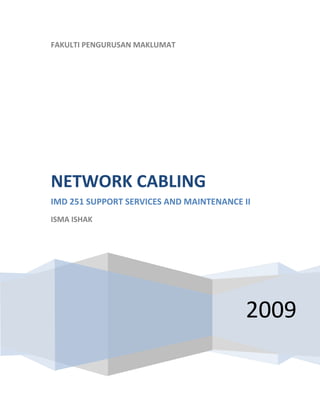

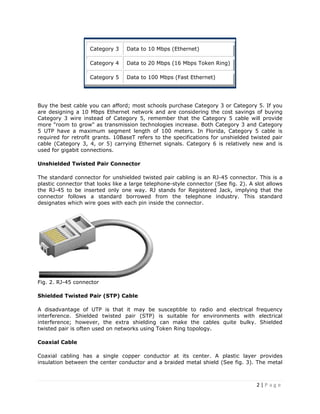
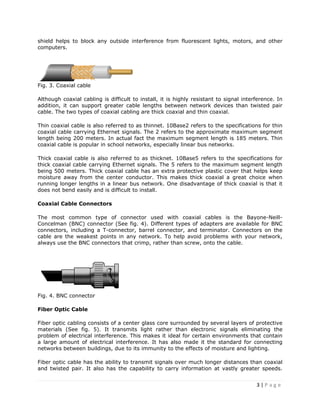
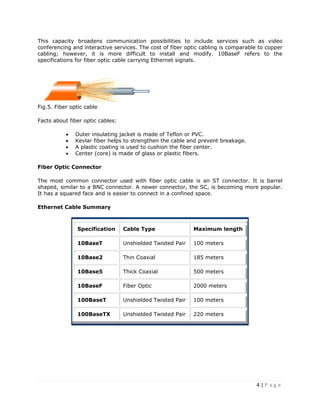
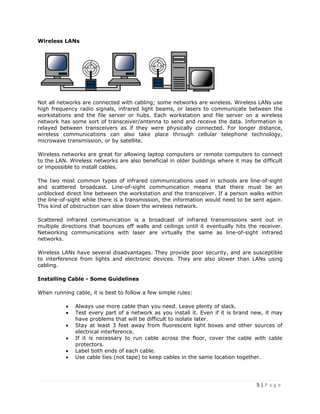

The document discusses different types of cables used for computer networking, including unshielded twisted pair (UTP), shielded twisted pair (STP), coaxial, and fiber optic cables. It describes the characteristics of each cable type and their uses. UTP is the most commonly used and comes in categories to support different transmission speeds. The document also briefly discusses wireless networking and provides guidelines for installing network cables.





